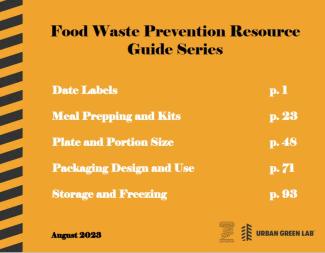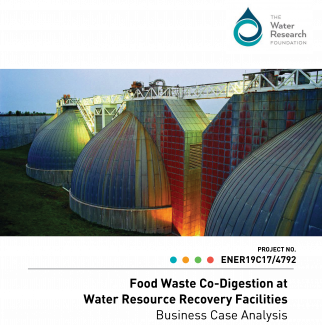ELI Report
ELI helps U.S. efforts to address plastic pollution via coherent, comprehensive study of existing federal legal authorities
There is growing momentum in the United States and at a global level to address the problem of plastic pollution. ELI, in partnership with the Monterey Bay Aquarium, helped the conversation take a big step forward by identifying existing legal authorities to attack the externalities of this ubiquitous and useful material.
In March, ELI published <Existing U.S. Federal Authorities to Address Plastic Pollution: A Synopsis for Decision Makers. This report identifies legal means for the federal government to leverage in achieving the national goal of eliminating plastic released into the environment by 2040. Building on the legal framework established by a congressionally mandated report from the National Academies of Science, Engineering, and Medicine, the ELI report categorizes federal authorities—spanning executive orders, legislation, regulations, and associated programs—into specific “intervention areas” across the plastic life cycle.
The report arrays these intervention areas alongside relevant authorities and their implementing agencies. Through discussions of each authority’s text and traditional application, the report describes how the federal government’s existing authorities can address plastic pollution across various stages of the plastic life cycle. ELI and MBA presented the conclusions of the report at the World Wildlife Fund’s Plastic Policy Summit.
The various intervention areas outlined in the report include reducing plastic production and pollution from production, innovating material and product design, decreasing waste generation, improving waste management, capturing plastic waste from the environment, minimizing at-sea disposal, and supporting information and data collection.
For each of these intervention areas, the report identifies legal authorities and relevant statutes. For example, the report identifies EPA as having authority to reduce plastic production and pollution from production as “Under the Clean Air Act, EPA can consider microplastic as a unique ‘air pollutant.’” The other authorities identified to reduce plastic production and pollution from production include those possessed by the Council on Environmental Quality, Occupational Safety and Health Administration, and Food and Drug Administration.
In great detail, the report documents each of the remaining intervention areas and relevant legal authorities, including, but not limited to, Consumer Protection Safety Commission, Department of Energy, Internal Revenue Service, Department of Commerce, and Department of Agriculture.
Notably, major environmental laws are cited as legal pathways, including the Toxic Substances Control Act, Clean Water Act, Coastal Zone Management Act, Resource Conservation and Recovery Act, Clean Air Act, Endangered Species Act, and more.
The report can also be used to conduct a gap analysis to identify specific aspects of addressing plastic pollution on which no existing authorities exist. ELI will continue its partnership with the Monterey Bay Aquarium on this important work.
Preparing for environmental accountability in Ukraine war
Beyond the devastating human toll of the war in Ukraine, the natural environment has also been a significant casualty. There have been chemical releases from damaged industrial sites, the militarization of nuclear sites, destruction of Kakhovka dam and the ensuing flood damage, impacts on air quality from the devastated cities and burned forests, ecological consequences of damage to agricultural areas and natural resources, water pollution and destruction of water infrastructure, pillage of natural resources, and pollution of sensitive terrestrial and marine areas. These impacts extend beyond the borders of Ukraine. Addressing this damage is a critical part of accountability and recovery.
Since convening the First International Conference on the Environmental Consequence of War in 1998, ELI has been a leader in informing the operation of mechanisms for accountability and post-war recovery, particularly with respect to the law, science, and economics of wartime environmental damage. This includes the UN Compensation Commission through which Iraq compensated Kuwait for wartime environmental damage to its oilfields, desert, and marine environment.
In preparation for recovery efforts in Ukraine, ELI is working with its government and other international partners to prepare for accountability and recovery. ELI supported the International Working Group on the Environmental Consequences of War in the development of “An Environmental Compact for Ukraine” and is continuing to advise on the legal, scientific, and economic dimensions of accountability for wartime environmental damage, to facilitate this effort and improve the effectiveness of environmental claims.
Food for thought: ELI’s submissions to EPA on food waste
Earlier this year, ELI submitted comment letters to EPA responding to the agency’s Draft National Strategy for Reducing Food Loss and Waste and Recycling Organics. The Institute proposed updates to EPA’s Waste Reduction Model, known as WARM, a spreadsheet-based tool for analyzing the potential lifecycle emission and energy savings of various waste management practices.
These comments build on the work of ELI’s Food Waste Initiative, which conducts research and works with stakeholders to prevent waste, increase surplus edible food donations, and recycle the remaining scraps.
One comment regarding the Draft National Strategy is summarized on our blog at go.eli.org/qvh.
The remaining two comment letters emphasized the importance of developing the data and tools needed to conduct comprehensive lifecycle greenhouse gas impact assessments for zero-waste strategies of source reduction, reuse, and recycling, particularly for food waste.
ELI points out that climate action planning relies on GHG inventory accounting, in which waste-sector data only capture emissions from product end-of-life to final disposition—for example, shifting from landfill to composting or anaerobic digestion. Yet by one estimate, more than 85 percent of GHG emissions associated with food waste occurs in the supply chain upstream from the landfill.
The ELI comments commend the lifecycle framework of the WARM model: it projects avoided upstream GHG emissions from food waste source reduction and donation, and downstream carbon sequestration gains from land application of recycling food scraps. However, they recommend several model modifications.
These include adding in the impacts from avoided land use change, which is responsible for over half the GHG reductions according to some estimates, and differentiating where in the supply chain from farm to households the food loss or waste is prevented. They further recommend development of improved data identifying the extent of changes in prevention, edible food recovery and recycling attributable to specific policies and programs.
Existing Federal Authorities to Combat Plastics Pollution.



